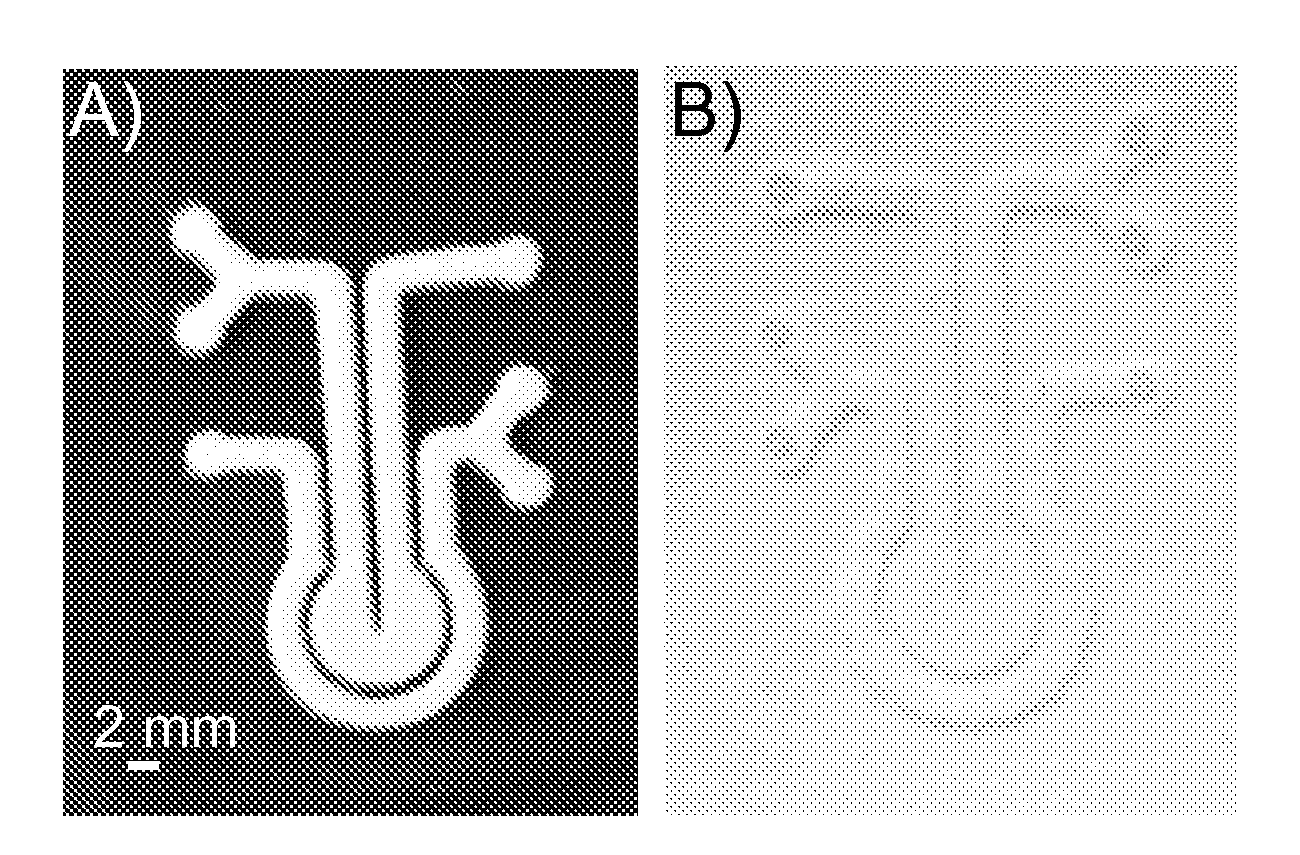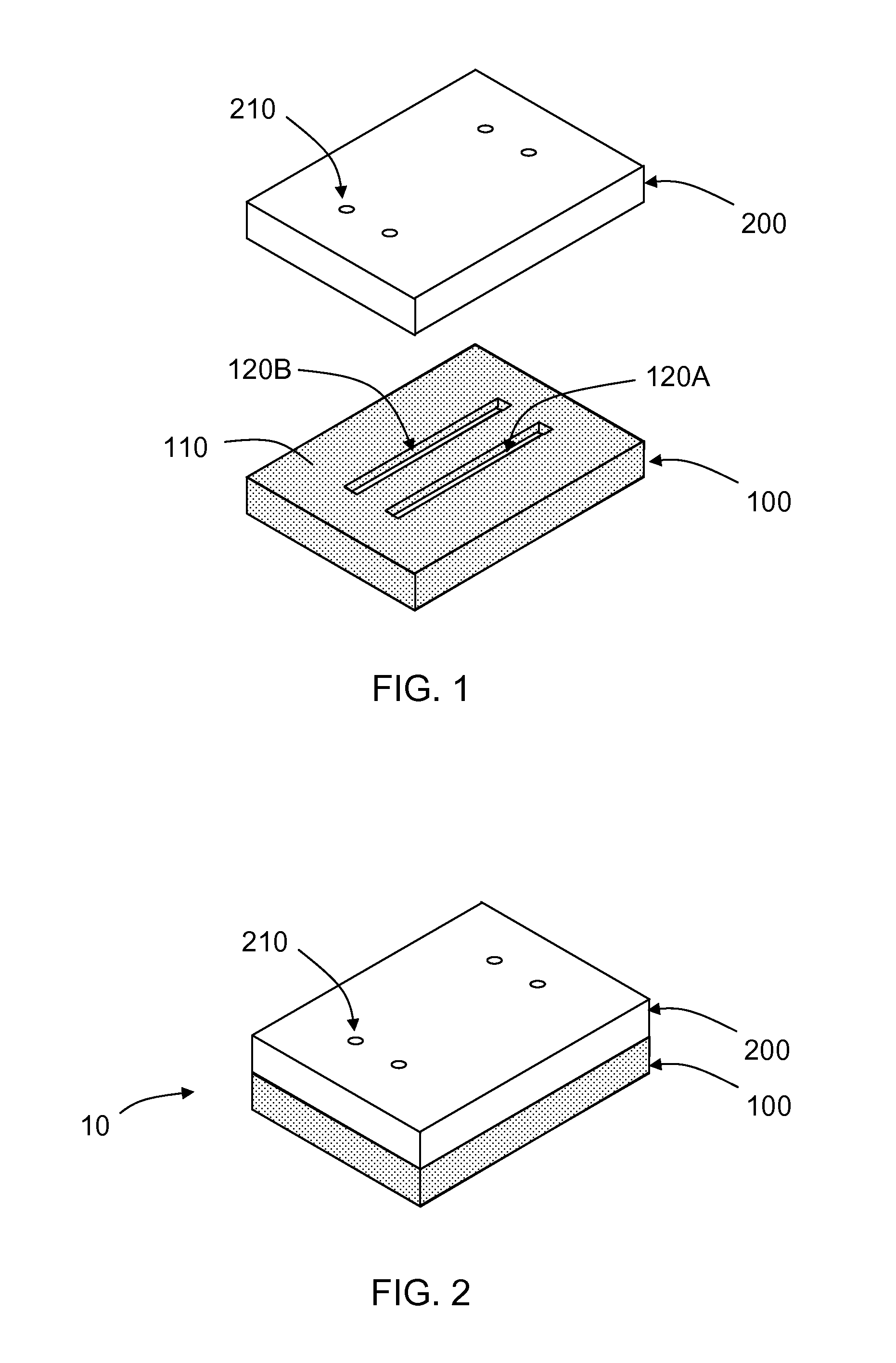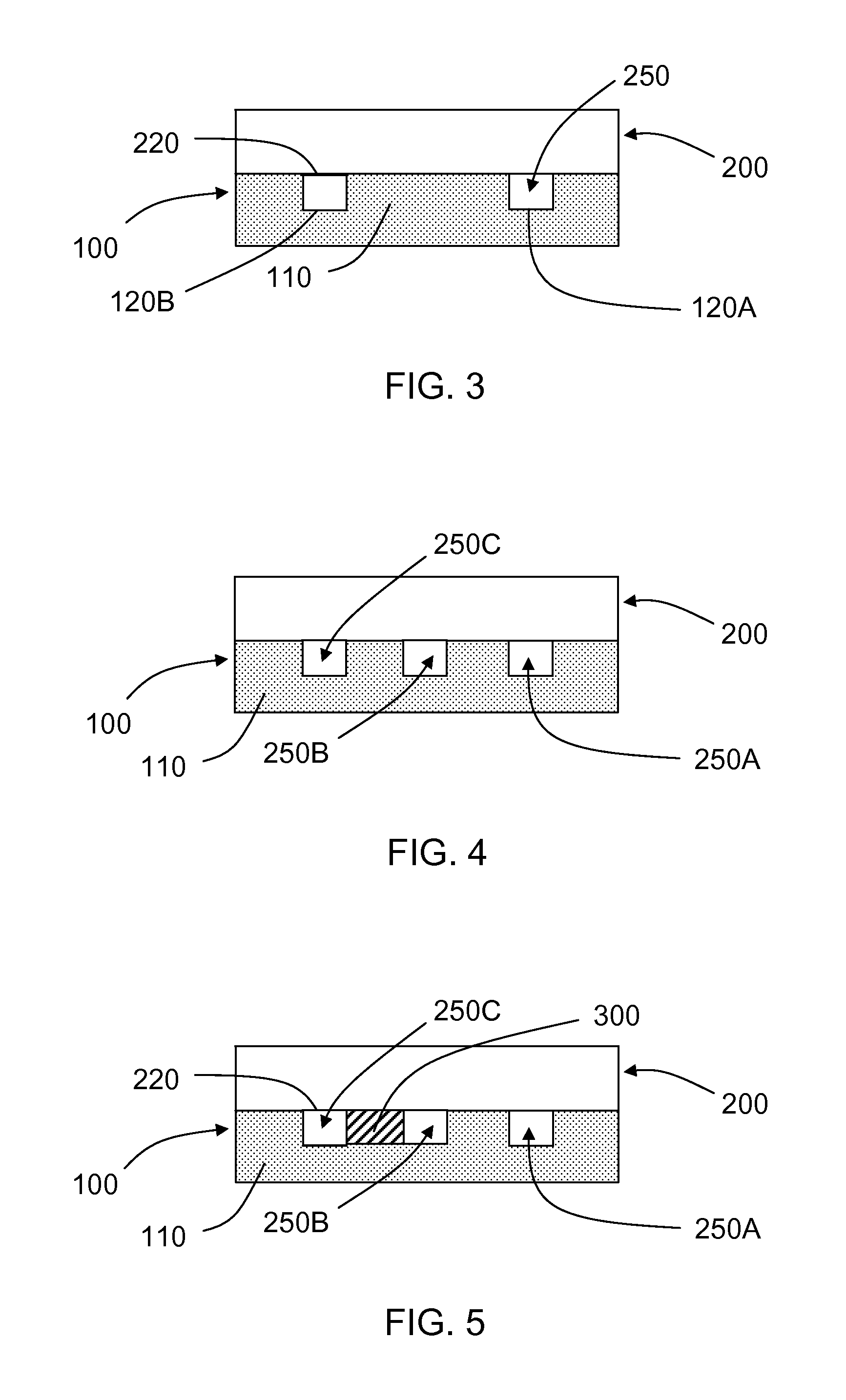Microporous Microfluidic Device
a microfluidic device and microporous technology, applied in the field of microfluidic devices, can solve the problems of difficult observation of microfluidic channels of devices, and achieve the effect of simple processes and gas transportation efficiency
- Summary
- Abstract
- Description
- Claims
- Application Information
AI Technical Summary
Benefits of technology
Problems solved by technology
Method used
Image
Examples
example 1
Device Design, Fabrication and Assembly
[0080]3D interconnected microporous PDMS microfluidic devices were developed to demonstrate the potential application of such devices via a gas absorption reaction. The device include of a 9.4 mm diameter inner circular chamber and a 2 mm wide outer circular channel separated by a 1 mm wide circular wall. Soft lithography was used to fabricate the microporous PDMS microfluidic device. Briefly, a microstructured mold was fabricated by stacking three custom cut 90 μm thick self-adhesive white vinyl sheets (Item # 699009; The Paper Studio®, Oklahoma City, Okla., USA) onto a glass slide (FIG. 9A). A PDMS prepolymer (10:1 w / w) (Sylgard® 184, Dow Corning Corporation, Midland, Mich., USA) mixed with pre-sieved sugar particles (1:2.5 v / v %) was cast onto the mold to a thickness of 2 mm and cured at 60° C. for overnight. The 2 mm thick microstructured PDMS replica was carefully peeled away. Then, the sugar particles in the microstructured PDMS replica w...
example 2
Acidification of Water by CO2 Gas
[0084]Bromothymol blue solution (Fluka® Analytical; Sigma-Aldrich® Corporation, St. Louis, Mo., USA) was used as a pH indicator solution to track the absorption of CO2 gas by water. As water absorbs CO2 gas, it reacts with the CO2 gas to form carbonic acid. Thus, the pH indicator solution should turn from blue (pH>7.6) to green (pH˜6.5-7.0) and then to yellow (pH2 gas was absorbed. The pH indicator solution with a pH of >7.6 (blue in color) was pipetted into the outer circular channel of the microporous PDMS microfluidic device (FIG. 12A) and was clearly retained inside the outer channel. The microporous structures remained dry during the experiment as indicated by their white appearance throughout the device (FIG. 12). Next, CO2 gas was generated inside a glass bubbler by dissolving dry ice in water. As the CO2 gas built up pressure inside the glass bubbler, it was directed through Tygon® tubing (Fisher Scientific, Pittsburgh, Pa., USA) into the inn...
PUM
| Property | Measurement | Unit |
|---|---|---|
| Water contact angle | aaaaa | aaaaa |
| Width | aaaaa | aaaaa |
| Particle size | aaaaa | aaaaa |
Abstract
Description
Claims
Application Information
 Login to View More
Login to View More - R&D
- Intellectual Property
- Life Sciences
- Materials
- Tech Scout
- Unparalleled Data Quality
- Higher Quality Content
- 60% Fewer Hallucinations
Browse by: Latest US Patents, China's latest patents, Technical Efficacy Thesaurus, Application Domain, Technology Topic, Popular Technical Reports.
© 2025 PatSnap. All rights reserved.Legal|Privacy policy|Modern Slavery Act Transparency Statement|Sitemap|About US| Contact US: help@patsnap.com



